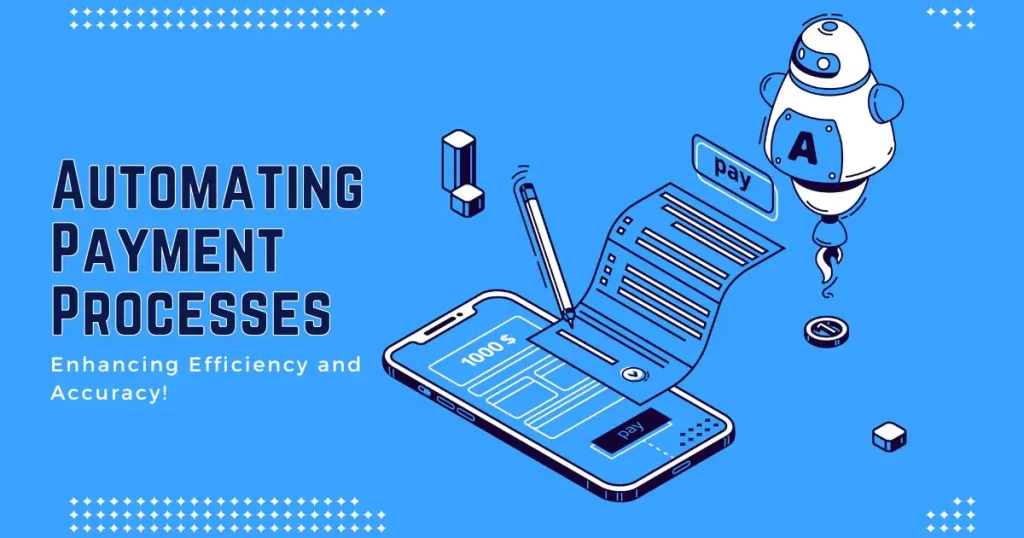In the highly competitive business environment, efficiency is not an option—it’s a requirement. Whether you have a startup or an established company, manual payment processing, delayed payments to vendors, and disconnected financial tracking can drastically slow your workflow. That’s where automate payments solutions enter the picture, revolutionizing how companies process payables and allowing finance teams more time and visibility to concentrate on strategic objectives.
What Are Automated Payments?
Automated payments are the application of electronic systems to handle, process, and authorize bill payments with little or no human intervention. Such systems are created to automate processes, enhance cash flow visibility, and minimize manual labor involved in conventional payment procedures.
Rather than having to log in to various banking portals, entering invoice information, or pursuing approvals, companies can send invoices through email, have smart tools capture the necessary data, and book or approve payments—all in a single centralized hub.
- Efficient Workflow, Smarter Cash Flow
Automated payment systems offer a substantial upgrade on manual processes, starting with time and effort reduction. What used to take many clicks and data inputs can now be done by merely emailing an invoice. AI assistants extract critical information such as invoice number, due date, amount, and recipient bank details, filling the system with accuracy.
These solutions not only eliminate the possibility of human error but also keep finance teams free from being overwhelmed by tedious administrative work. The outcome is an efficient workflow that liberates precious time, enabling teams to get back to doing the things that spur business growth.
- Real-Time Visibility and Control
Financial transparency is essential for any company, and automated payment systems deliver just that. With real-time dashboards, businesses can see all pending, scheduled, and executed payments across departments and vendors. The whole payment cycle—from receiving the invoice to the final disbursement—is transparent, traceable, and auditable.
Payment statuses like “draft,” “pending approval,” “scheduled,” or “paid” keep stakeholders informed and ahead of schedule. Slow payments and missed deadlines are a thing of the past, as old invoices and future due dates are flagged automatically.
- Flexible Approval Workflows
Companies tend to have several stakeholders involved in the approval of payments. Automated payment systems provide role-based access and multi-level approvals so that payments adhere to internal compliance guidelines. From admins to finance users, various team members can create, submit, and approve invoices depending on pre-defined permissions.
This eliminates bottlenecks due to missing approvers and allows for seamless, uninterrupted processing. Automated notifications alert all the concerned parties, and approvals can be done on time.
- Smooth Integration with Accounting Packages
The other unique benefit of automated payment systems is integration with common accounting packages. Each approved transaction can be automatically synced, eliminating redundant entries, accelerating reconciliation speed, and improving audit readiness.
This smooth exchange of information between your accounting and payment systems enables quicker month-end closings, delivers richer insights into spending behavior, and minimizes the likelihood of discrepancies between teams.
- Built for Team Collaboration
The function of a business’s payables tends to cross departmental boundaries. Automated solutions are designed to facilitate collaboration without the requirement of new employees or complicated onboarding. Team members of any role can upload, monitor, and authorize payments in accordance with company policy.
This creates transparency, mutual responsibility, and accountability. Whether it’s a finance manager setting up a vendor payment or a team lead uploading an invoice for approval, everyone remains on the same page through a central platform.
- Simple, Scalable, and Secure
In essence, an automated payment system is designed to grow with your company. Whether you pay five invoices a week or five hundred, these systems are flexible enough to keep up with your increasing requirements. They can handle payments in various currencies, monitor cross-border transactions, and provide the same level of reliability whether you’re paying local suppliers or foreign vendors.
All transactions are secured using tier-1 banking infrastructure and strong data protection measures, providing businesses with the assurance they require to automate their financial processes.
Conclusion:
The move towards automated payments is not merely a technological advancement—it’s a business strategy. It removes manual inefficiencies, offers real-time visibility, improves control, and enables teams to make more intelligent decisions about payables.
For today’s businesses looking to maximize resources, enhance cash flow, and grow operations without excess complexity, automated payments provide a streamlined way forward. Implementing this strategy is not merely about paying bills—it’s about investing in operational excellence and future growth.


